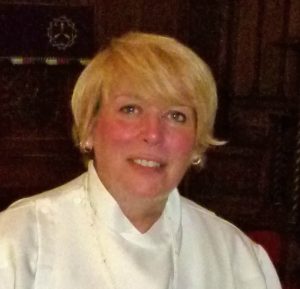By Laura Heller, Minister of Word and Service and Creation Care Ministry Coordinator for the Delaware-Maryland Synod.
 “In those days Jesus came from Nazareth of Galilee and was baptized by John in the Jordan. And just as he was coming up out of the water, he saw the heavens torn apart and the Spirit descending like a dove on him. And a voice came from heaven, “You are my Son, the Beloved; with you I am well pleased.” (Mark 1:9-11, NRSV).
“In those days Jesus came from Nazareth of Galilee and was baptized by John in the Jordan. And just as he was coming up out of the water, he saw the heavens torn apart and the Spirit descending like a dove on him. And a voice came from heaven, “You are my Son, the Beloved; with you I am well pleased.” (Mark 1:9-11, NRSV).
Reflecting on our history, we see how water was created to cleanse and give life. In the very beginning of creation, the Spirit of God breathed on the waters of the earth (Gen 1:2). The waters of the great flood marked a cleansing of sin and the possibility of a new beginning (Gen 6:13). The Israelites passed through the Red Sea and were delivered from slavery into freedom (Exo 14:22). Jesus was baptized by John in the waters of the Jordan and was anointed with the Holy Spirit (Mark 1:9-10).
In baptism, we “pass through water.” This movement is a sign of our participation in the death of Christ and his emergence into new life: new life freed from the power of evil; new life in which the power of God’s life and love prevail.
It is very fitting that water is the element used in baptism because it is the STUFF of LIFE. It is vital to our existence just as our relationship with God is vital to our existence. The human body is more than 60 percent water. We need water to exist: we can live for 3 weeks without food, but only 3 days without water.
Earth is known as the watery planet: over 70% of the largest habitat for life. This seeming abundance of water can make it easy to think that it will always be plentiful. However, freshwater—the stuff we drink, bathe in, irrigate our farm fields with—is incredibly scarce. Only 3% of the world’s water is fresh water, and two-thirds of that is tucked away in frozen glaciers or otherwise unavailable for our use. That leaves only 1% of the world’s water available for human consumptive uses.
Many of the water systems that keep ecosystems thriving and feed the growing human population have become stressed. Rivers, lakes and aquifers are drying up or becoming too polluted to use. More than half the world’s wetlands have disappeared. Agriculture – particularly the industry of raising animals for food – consumes more water than any other source and wastes much of that through inefficiencies. Climate change is altering patterns of weather and water around the world, causing shortages and droughts in some areas and floods in others.
At the current consumption rate, this situation will only get worse. By 2025, two-thirds of the world’s population may face water shortages. And ecosystems around the world will suffer even more.
As the church, we need to demonstrate leadership in sharing the message about caring for the sacred gift of water. As ELCA Presiding Bishop Elizabeth Eaton points out in her Earth Day Statement:
“In grateful response to God’s grace in Jesus Christ, this church carries out its responsibility for the well-being of society and the environment. Our ‘concern for the environment’ is shaped by the Word of God spoken in creation, the Love of God hanging on a cross, the Breath of God daily renewing the face of the earth. Our concern is, then, propelled by hope and guided by principles of justice. We find our hope in the promise of God’s own faithfulness to everything God has made. We seek justice for all of creation in concert with God’s creative and renewing power.”
